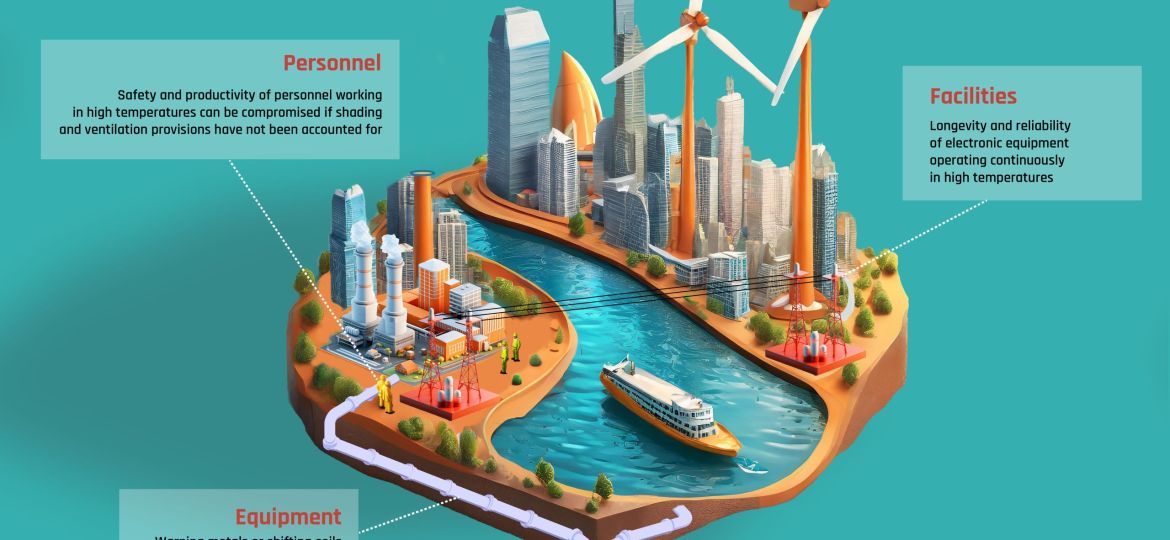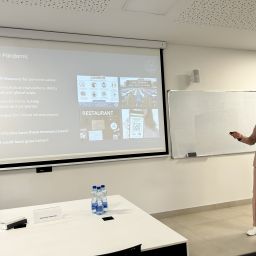
SUNRISE CRITICAL INFRASTRUCTURE SERIES
Climate change impacts on employee health in critical entities – Establishing Heat Health Action Plans –
When it comes to climate change, critical infrastructure operators across Europe are slowly preparing their facilities, equipment, and personnel to operate under more strenuous conditions. The Intergovernmental Panel on Climate Change (IPCC) has reported on the projected temperature increases and its impact on more frequent and intense extremes [1]. Soaring temperatures, for example, will have a direct and profound impact on the day-to-day operations of critical infrastructure. Facility operators must account for warping metals or shifting soils that compromise safety and operations. Operational managers must account for changing longevity and reliability of electronic equipment operating continuously in high temperatures. Last, but not least, the safety and productivity of personnel working in high temperatures can be compromised if shading and ventilation provisions have not been accounted for or more frequent or extended breaks not managed correctly.
In a recent report, entitled ‘European State of the Climate 2023’ [2], published by the Copernicus Climate Change Service (C3S) and World Meteorological Organization (WMO), heat-related deaths were reported have increased by approximately 30% in the past 20 years in the European regions monitored. As such, it is of growing importance to account for the environmental impact on the human body. This is done using thermal comfort indices such as the Wet-bulb Globe Temperature (WBGT), used in ISO 7243 & 7933, or the Universal Thermal Comfort Index (UTCI) [3]. UTCI is a measure of a person’s “thermal comfort” after considering the temperature, humidity, wind speed, sunlight and the heat emitted by the surroundings [4]. UTCI calculations have shown the last three years have the greatest number of days with ‘Extreme Heat Stress’ in Europe since the 1950s [4]. The summer of 2024 is forecasted to be anomalously warm as well [5].
Climate projections show statically significant increases in UTCI over the entire European domain [6] and ensuring critical infrastructures take pro-active measures rather than reactive measures to protect their employees is one small component in complying with the new European Commission’s Critical Entities Resilience Directive (CER) [7]. To fulfil the CER Directive, in terms of climate risk management, close collaboration between critical entities and climate service providers, such as the Climate Service Center Germany (GERICS) at the Helmholtz‐Zentrum Hereon, allow for the customization of climate change information tailored to an entity’s needs. In addition, through the co-development process a holistic approach to climate risk management across the entity can ensure a consistency in both short and long-term horizons, ultimately accelerating the path to climate adaptation [8, 9]. The policies developed today will help maintain a critical entity’s ability to operate smoothly in a changing climate.
Written by: Dr. Christine Nam
[1] https://www.ipcc.ch/report/ar6/syr/downloads/report/IPCC_AR6_SYR_SPM.pdf
[2] https://climate.copernicus.eu/esotc/2023
[3] https://rmets.onlinelibrary.wiley.com/doi/10.1002/gdj3.102
[4] https://climate.copernicus.eu/esotc/2023/temperature-and-thermal-stress
[5] European Centre for Medium-Range Weather Forecasts (ECMWF) seasonal forecast for June-July-August 2024, forecasted in May 2024, of the 2m temperature anomalies with respect to the reference period of 1993-2016. Website: https://charts.ecmwf.int/products/seasonal_system5_standard_2mtm?area=EURO&base_time=202405010000&stats=extr-2&valid_time=202406010000
[6] https://doi.org/10.1016/j.cliser.2024.100447
[7] https://ec.europa.eu/commission/presscorner/detail/en/ip_23_3992
[8] https://www.ipcc.ch/report/ar6/wg2/downloads/outreach/IPCC_AR6_WGII_FactSheet_Health.pdf
[9] https://www.genevaassociation.org/sites/default/files/climate_risk_web_final_250221.pdf
Image Credit: CARR communications
















